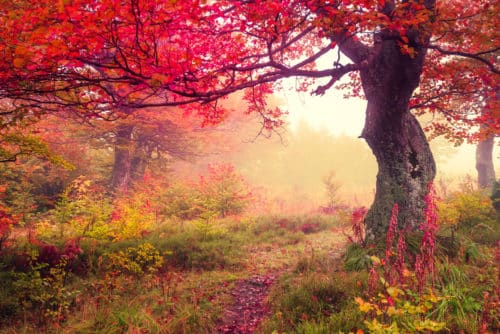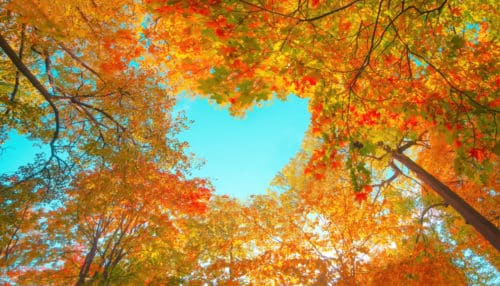 There is a maple tree in the backyard that I have been admiring for weeks now. It is a verdant and bushy tree during the spring and summer months, but autumn has set it spectacularly ablaze.
There is a maple tree in the backyard that I have been admiring for weeks now. It is a verdant and bushy tree during the spring and summer months, but autumn has set it spectacularly ablaze.
At first, the maple combusted in a brilliant, ruby-red conflagration. I oohed and aahed, and prayed the frenzy of scarlet would last all season.
But it did not last. I reacted with horrified grief at the first signs of change, but the maple consoled me.
Next, it melted into a candescent citrine. I oohed and aahed, and prayed the frenzy of saffron would last the remainder of the season.
But it did not last. As before, I reacted with horrified grief at the first signs of change, but the maple consoled me.
Next, it burst into a yellow sun. I oohed and aahed, and I prayed the supernova of gold would last the remainder of the season.
At each stage of the process, I found myself enraptured. But I also found myself wishing that each stage would last forever, so convinced was I that it could not be improved upon. And despite my resistance to the change that was unfolding, the leaves stubbornly changed color. And each time a given stage reached its height of expression, I found myself convinced that this—this—was truly the most beautiful color yet.
There is a lesson here—one of many that Nature teaches in autumn.

Our resistance to change, rooted either in fear of the unknown or addiction to pleasure, so often stands in the way of our receiving something even more perfect, even more beautiful, even more gratifying, even more awe-inspiring.
Just as my attachment to red stood in the way of my even greater rapture at orange.
Just as my attachment to orange stood in the way of my even sweeter ecstasy at yellow.
But, eventually, yellow gives way to brown, and brown gives way to barrenness. Sometimes, we feel we are justified to cling desperately to what is, because there truly is something unpleasant or even severe ahead.
Yes, the extravaganza of color eventually ends, heralding winter. But Nature, ever the great teacher, does not leave us without reason to take heart.
Nature invites us to consider that the trees voluntarily let go of their leaves. They willingly relinquish their former glory, their former pride, during autumn.
Just so, we must become willing to let go of that which no longer serves us. We must become willing to let go of people, places, and things that have outlived their usefulness, that have become vestigial. We must be willing to endure the winter ahead, a season of austerity, darkness, and coldness. Will “spring” ever come again? Will hope blossom once again? We wonder, often anxiously. Winter is wide, deep, still, and silent. There is no sign to suggest spring will come again.
The beauty of the trees’ voluntary letting go of their leaves is that the fallen vegetable matter becomes fertilizer that nourishes the very tree from which those leaves fell. This means that each round of letting go—no doubt scary, sad, regrettable—ensures that the next burst of foliage will be all the richer and all the more vibrant.
In human terms, this means that each round of letting go of people, places, and things that no longer serve us results in the eventual enjoyment of new people, new places, and new things that are more satisfying, more rewarding, and more fulfilling.
Contact us today to schedule a complimentary 15-minute phone consultation or to book an appointment.
I strive to create a safe, comfortable, and supportive environment for individuals who are confronting issues related to adjustment, anxiety, depression, grief, stress, relationships, and trauma. I specialize in helping individuals who find themselves caught in repetitive patterns of less-than-effective coping and bewildering self-defeat. Call or message today to schedule your free phone consultation or arrange your first appointment.

